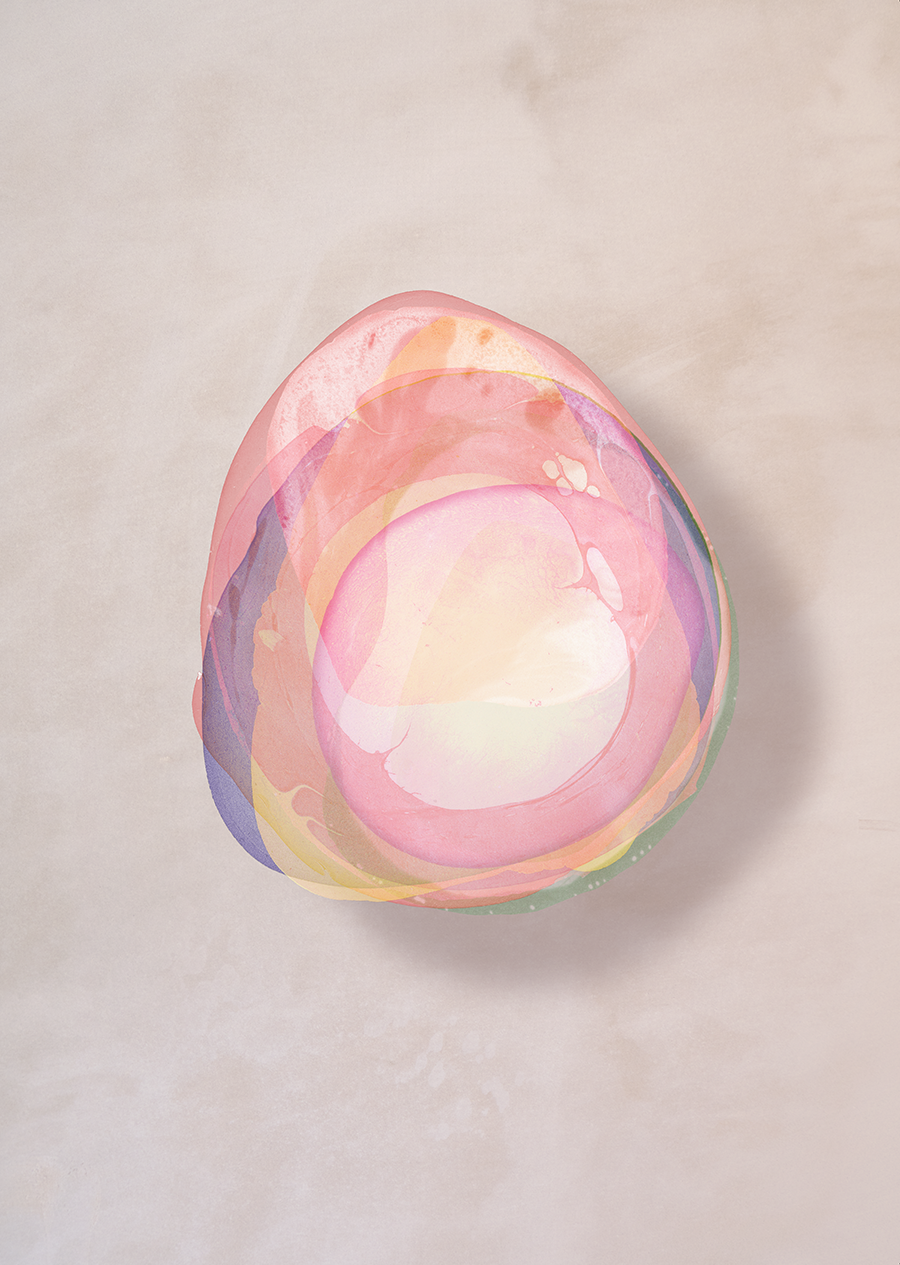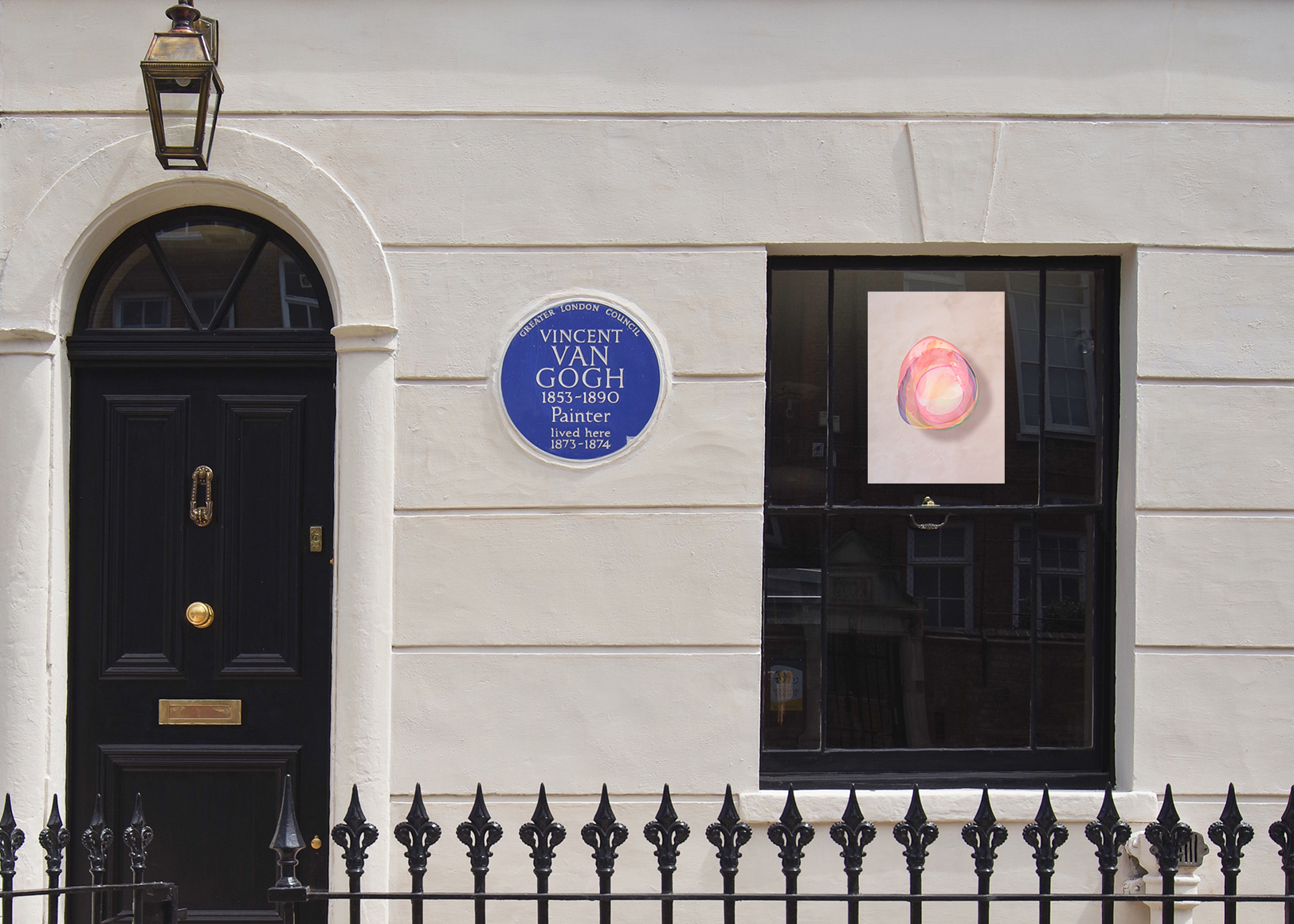JUNE:
THERE ARE LILACS, HAWTHORNS AND LABURNUMS ETC. BY LESLEY SHARPE

‘On the Western Window Pane’ is a new year long fundraising project organised by the Van Gogh House, presenting 12 artist designed, limited edition posters in its front, West facing window.
Artists and writers were invited to create posters drawing out the many-layered narratives from the building’s remarkable history. Each artist has taken their own approach to topics ranging from domesticity and mental health to coming-of-age and unionism.
Lesley Sharpe studied Fine Art at Glasgow School of Art specialising in printmaking and Anthropology of Space, Architecture and the Landscape at Birkbeck, London. She currently teaches at the Slade School of Fine Art. Since 2008, a key element of her practice has centred around the production of fine art prints and artist’s books in collaboration with and for artists. These have been produced through her imprint The Small Press founded in 2008 and Holding Page, an editions practice, co-founded 2011.
Her work combines her interest in both analogue and digital printmaking techniques to explore the conceptual and material interpretation of landscape with current research borrowing from various practices such as psychogeography, agriculture, horticulture, photography, printmaking and her passion for randonneurring, a form of long-distance cycling.
Recent work includes Structures of Forgotten Origin, which explores ideas of the periphery through a field study of historic and contemporary landscapes. This collaborative project aims to circumnavigate London’s Metropolitan Green Belt by locating the 200+ coal-tax posts erected by the City of London in the mid-19th Century to mark the boundary where taxes on coal were due. The posts, cast in a variety of different materials, form a circular network of 20 miles radius around the city. The project explores the analytic agricultural process of soil chromatography and analogue photography as methods of representation.

When researching for the poster project I began by reading VG’s letters to understand his relationship to Hackford Road, the local area and his sense of place. Observations about nature whilst walking seemed to be a recurring theme in his letters to his brother Theo. He remarked on the differences between the landscapes of London and Holland but he also mentioned the changing state of the trees which would perhaps have been a constant between the two. It struck me they were probably the same trees that I saw when I came to visit the house and explored the area.
I normally start with a photograph when making things before transforming it through a print process. That may be a photograph of an object i’ve found or made, or a specific site of enquiry. For the poster I started with the process which was a new way of working for me. The process I used was mastered by a Japanese artisan named Tokutaru Yagi, born within years of Van Gogh. He mastered the art of Suminigashi (floating-ink-dying) which we now recognise as marbling. Towards the end of his life – afraid that his secrets would disappear with his death – he dictated his life’s knowledge of oil and water in a document entitled Suminigashi-zome (1913). An English edition was later published in 1991 by Heyeck Press.
My initial marbling attempts were disastrous but through the process of learning about the properties of oil and water and how to manipulate the tension between the two materials I began to focus more on the process as a means of printing singular cells of ink as opposed to creating marble-like patterns. There’s a certain lack of control in printmaking that happens at the point of contact and separation between two surfaces. An action that can either lead to failure or new discoveries led by the material qualities. The oil and water created amorphous and pleasing shapes that were expressive but not uncontrolled. I was experimenting with different substrates and found some reams of very lightweight silver foiled paper that I was kindly gifted some years ago by a retired printer and printmaker. They had just the right level of sheen to lift these ephemeral, floating petal-like blobs from the surface of the water. The cells were then scanned and manipulated digitally in order to be reproduced as a digital pigment print.
I wanted the poster to provide a similar delicate moment of floating colour amongst the strong urban grain of Stockwell’s brick and wood, like blossom falling from the trees in spring.
The earliest instruction for floating ink in Volume 3 of Dictionary for Amusement Games (1830) written by a japanese marbler named Shinsetsu Kitamura. The translation requires one to have at hand, or source the following ingredients: white ash of the pawlonia tree, pine resin or pine needles, alum, red powder, indigo, black ink and human hair.
A letter from Van Gogh’s early days in London contained a transcription of a poem by John Keats called ‘The Eve of St. Mark’. One of the verses contains the line ‘on the western window panes’ and continues to describe how the whole world seems to be reflected and contained in this piece of glass:
The verse captures Van Gogh House’s approach to this project, seeing the building as a portal to an endlessly rich body of themes and conversations.
Further education materials around the influence of Keats on Van Gogh can be found in our Learning area, under Learning Activities
As with many other small arts organisations, the Van Gogh House was severely affected by the pandemic. By selling posters, Van Gogh House hopes to support the artists involved and use the income to fund future projects.
A new poster will be installed on the first of each month until March 2022, with 12 posters in total. We encourage everyone to place their posters in their windows, and to share their thoughts and reflections with us.
What do you think about this poster? How would you have responded to Keats’ poem? Would you show the poster in your window?
Take part in the conversation by:
87 Hackford Road,
London,
SW9 0RE
UNITED KINGDOM
Brighid Lowe, Madeleine Pledge, Lesley Sharpe, Allison Katz, Jordan & Frank Baseman, Ye Funa, Katrina Palmer, Aisha Farr & Will Harris, Rosa-Johan Uddoh, Gray Wielebinski, Tom Lovelace and Feifei Zhou.
With thanks to Benjamin Arthur Brown for curating the project, Klaudia Bebenek for her help in producing this project, Omnicolour for printing the posters, and to the artists involved.
Download the press release here. For enquiries, please write to Eleanor at press@vangoghhouse.co.uk